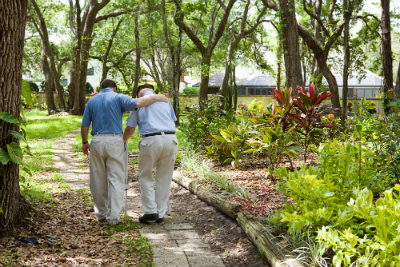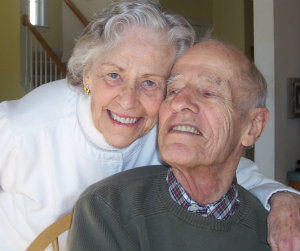 Did you hear the story about the New York woman who fought tooth and nail to honor her father’s wish to die at home, only to have the health care system bounce him from facility to facility? He died in a hospital hospice unit with deep pressure ulcers and a million dollars in costs for care that was unwanted.
Did you hear the story about the New York woman who fought tooth and nail to honor her father’s wish to die at home, only to have the health care system bounce him from facility to facility? He died in a hospital hospice unit with deep pressure ulcers and a million dollars in costs for care that was unwanted.
Or how about the piano teacher dying from cancer who Atul Gawande wrote about? Through a conversation about her priorities, she returned to teaching his daughter and other students, all during home hospice care over the last six weeks of her life. She focused not on having a good death, but on having the best days possible right until the end.
These are stories that stuck with me. They hit a chord. They struck a nerve. However you describe it, they changed the way I was thinking and compelled me to share them—to get others outraged or to give them hope.
This is the power of stories, which we believe can be used to make change.
 Second-prize winner Rosemary Rawlins was a caregiver for both of her parents, Jule and Bill Healey.
Second-prize winner Rosemary Rawlins was a caregiver for both of her parents, Jule and Bill Healey.That’s why we sponsored our second-annual story contest focused on family caregiving stories and in particular the strategies and solutions that have helped family caregivers overcome their many challenges. We received more than 100 entries and profiled the top three prize winners in recent weeks. (Read Dementia Caregiving: Returning to the Village, Family Caregiving: ‘A Progression of Life', and Caregiving: ‘A Gift and a Privilege’.)
Like any tool, stories are only effective if they are picked up off the shelf and used.
Whether it’s as a handout for a talk to a local community group or by posting on your organization’s website or blog, we encourage use of these stories to support efforts to improve family caregiving.
Stories may be reproduced and republished freely, with the following conditions: Stories must be used in their entirety, unaltered, and credit must be given to the author and the John A. Hartford Foundation. By copying this material, you acknowledge that this must only be used for non-commercial purposes, with acknowledgement, and with the intention of improving the care of older adults. We would also greatly appreciate notice of any use of these stories and welcome questions at stories@jhartfound.org.
Therefore, we wanted to share some suggestions on how you might utilize these stories from our contest winners and finalists, and others that you find or generate yourself. Here are some suggestions:
Use the stories to raise general awareness and educate your public.
I just had the great privilege of meeting one of the best storytellers in health care (or possibly in any field), Atul Gawande, and then heard him speak to a packed house at the annual West Memorial Lecture at Mount Sinai here in New York. More than anyone I can think of, his books and essays have changed the public conversation about health care.
His most recent best-selling book, Being Mortal, contains the story about Peg the piano teacher and has sparked conversations about death, the “medicalization of mortality,” and how health care can reduce suffering at the end of life by listening to what people really want. In his lecture, he used Peg’s story to get his message across in a way that facts and figures could not do alone.
Sometimes, stories are particularly useful for raising important issues that fly under the public’s radar. Too few people think about financial abuse of elders or addiction problems among older adults, for example. Finalist Carolyn Iverson’s story, “My Parents, Myself, and My Children: Learning From Each Other to Provide a Better Future for All,” addresses both. Her harrowing tale can help bring these issues to life if these are areas in which you work.
Use the stories in advocacy with policymakers and others in positions of power.
 Stories can be powerful advocacy tools.
Stories can be powerful advocacy tools.Communicating with the public to inspire them to rise up and demand change by their leaders is necessary, but it takes a long time to achieve. The process of change can be sped up when advocates go directly to the people in power, and stories can be one of the most powerful tools advocates have. Our grantee Community Catalyst uses videos and written stories at conferences with policymakers and health care leaders to explain the need for the right kind of integrated care for low-income older adults.
We’ve also been supporting an Aging & Health series with the country’s leading health policy journal, Health Affairs, which reaches a highly influential group of policymakers and health system leaders. Their Narrative Matters section uses stories to give meaning and relevance to the data and policy recommendations contained between its covers. Louise Aronson’s piece, “Necessary Steps: How Health Care Fails Older Patients, And How It Can Be Done Better” and Pierre Elias’s recent essay “Insensible Losses: When The Medical Community Forgets The Family” are two particularly powerful stories that I know will touch the hearts of those working on health issues in our nation’s capitol and help guide them to craft the right policies.
In our stories below, a few stand out as potential advocacy tools. A finalist entry by Judy Donoghue tells her story as caregiver to a spouse with dementia. Her story can make a powerful case for policies that better support senior centers and caregiver support groups that helped her cope. Another finalist entry, “The Right Room” by Amber Herrick, highlights Oregon’s Independent Choices Program, which allows the extremely disabled to hire their own caregivers on their own terms, something that can be advocated for in states across the country.
Use the stories to teach your students.
Many Health AGEnda readers are educators of health professionals. The stories here can certainly be woven into your curriculum as you teach about the needs of older adults and their family caregivers. A particularly helpful story for you might be from geriatric social worker Elizabeth Mulvaney, who in “More Than a Bath,” not only uses the intimate and difficult task of bathing her disabled mother to tell a great story, but also includes references to the scientific literature she drew from to help her.
Use the stories in your fundraising.
Finally, foundation staff and wealthy individuals are certainly not immune to the power of stories. Some of our best proposals include vignettes and stories about either real-life individuals or composite characters that help us understand the meaning of the work. If you are working on family caregiver projects and find it appropriate, please feel free to use any of the below stories as part of your materials and proposals.
This year’s contest yielded a strong field of finalists, so I’m glad that we have the opportunity to share some of them and hope that these tips on using these stories as tools will be helpful to our grantees and colleagues in the field.
And we hope that all of our readers will join those who entered the contest in using their own stories to win over hearts and minds and create change that improves the health of older adults.
Prize-Winning Stories
Dementia Caregiving: Returning to the Village by Halima Amjad, MD, MPH
Family Caregiving: ‘A Progression of Life' by Rosemary Rawlins
Caregiving: ‘A Gift and a Privilege’ by Marielena Zuniga
Other Finalists
“How I Became a Caregiver” by Kathryn Adams
“Untitled” by Judy Donoghue
“The Right Room” by Amber Herrick
“My Parents, Myself, and My Children” by Carolyn Iverson
“Two Peas in a Pod” by Karalee Jacobs
“Untitlied” by Lisa Johnson
“More Than A Bath” by Elizabeth Mulvaney
“Wishing” by Rosemarie Robotham
